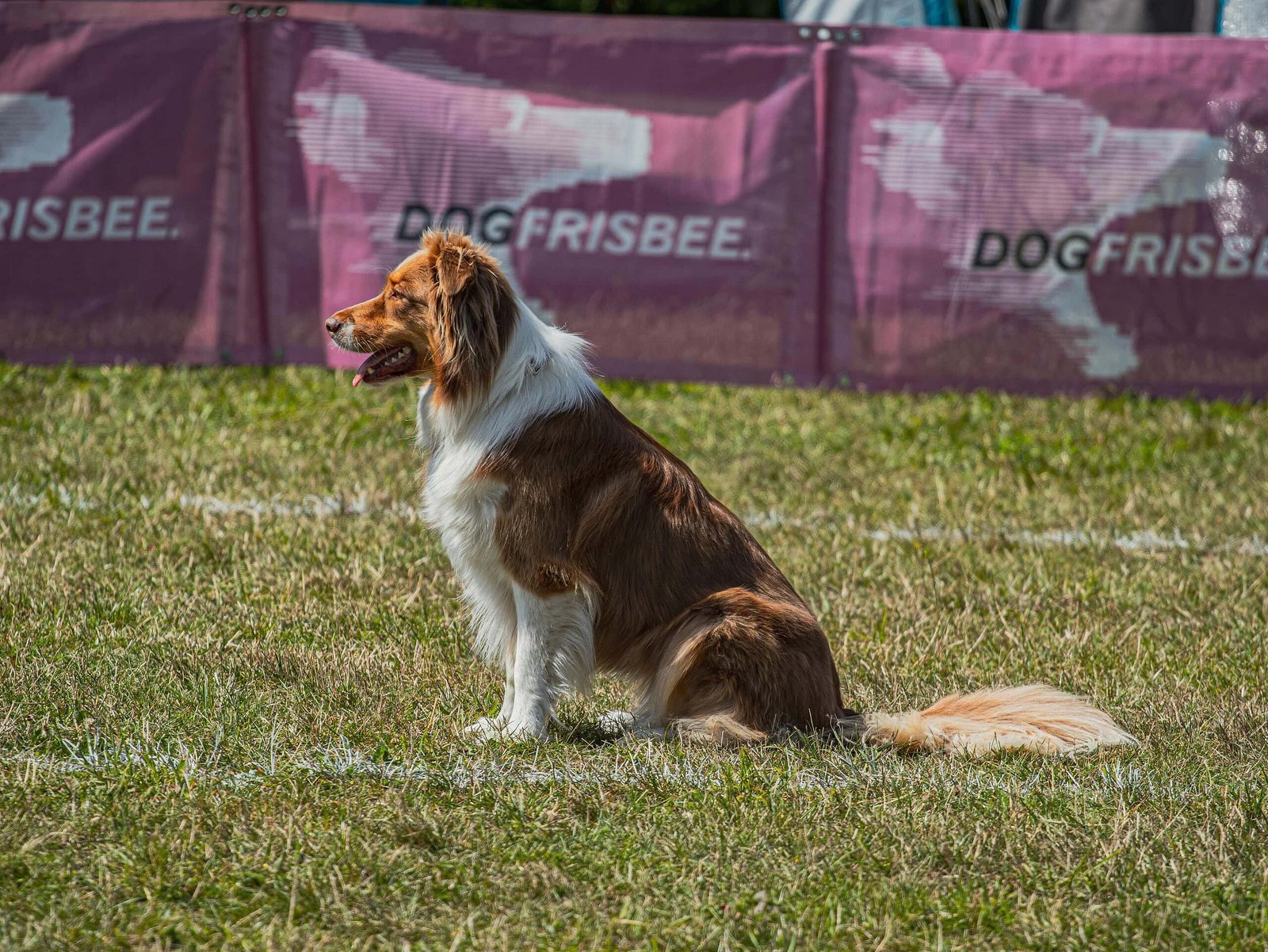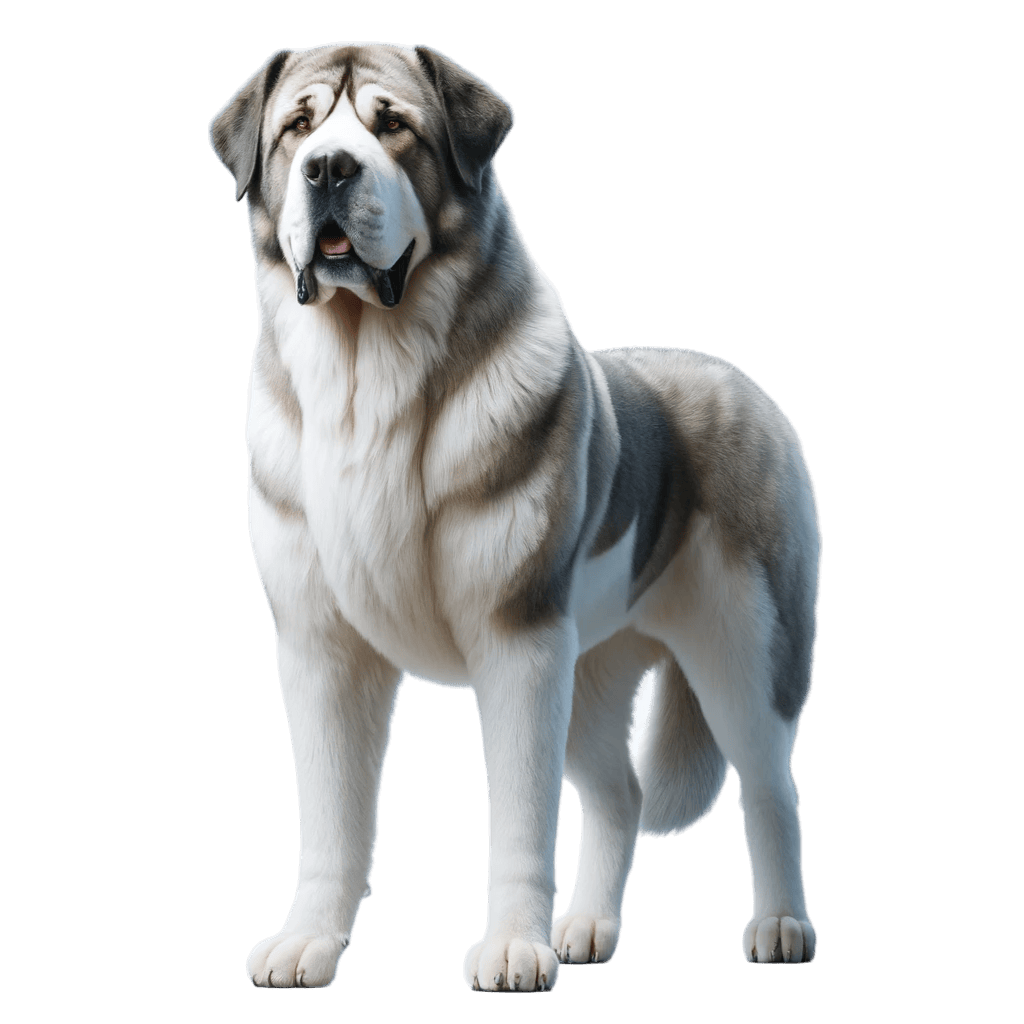AUSTRALIAN SHEPHERD
A brief overview
The Australian Shepherd, known as an Aussie, is an intelligent, energetic and versatile breed bred in the United States. These dogs come in a variety of colors, including the popular merle, and are ideal for canine sports like agility and frisbee. They require plenty of exercise and mental stimulation, making them suitable for active families.

Table of contents
Country of origin
The dog originated in the US.

BREED CHARACTERISTICS
Weight
Dog 23 – 29 kg, bitch 18-25 kg.
Height
Dog 51 – 58 cm, bitch 46 – 53 cm.
Type of hair
Medium long, medium hard, straight or wavy. Blue marbled, black, chocolate marbled, chocolate colored coat – with or without underbrush and white markings.
Life expectancy
13 – 15 years.
Health
The breed is considered healthy, but is prone to injury and trauma due to its active lifestyle.
Character
Intelligent, hardy, with strong herding and guarding instincts. Gentle, but may show reserve at first meeting.
Need for exercise
High need for physical activity.
FCI classification
Group I (sheepdogs and cattledogs), section 1 (sheepdogs).
Price
4,500 – 7,000 PLN, up to even 10,000 PLN (ZKwP).
History and origins
The Australian Shepherd, although its name suggests Australian origins, was actually bred in the United States. The breed originated from the crossbreeding of various shepherd dogs, possibly including dogs brought from Australia by Basque sheepherders in the 19th century. After World War II, Australian Shepherds gained popularity in the United States, mainly due to western riding shows, which were widely shown on television and in movies. Their versatility and ease of training made them prized farm dogs, capable of working with cattle and sheep. In Poland, the first Australian Shepherd appeared in 1995.
Appearance and physique
The Australian Shepherd is a medium-sized dog, with a harmonious body structure and a strong torso. Its head is flat and strong, with a slightly tapering muzzle. The ears are triangular, upright and refracted toward the front. Eyes can range in color from blue and green to amber and peony, depending on the coat. The Australian Shepherd’s tail can be long, short or vestigial from birth. The coat of the Australian Shepherd is of medium length, straight or slightly wavy, with a lush undercoat. Typical coats include colors such as black, blue merle (marbled), chocolate and red merle, often with white markings and underbrush. A variety of color combinations are characteristic of the breed, giving each dog a unique appearance.
Temperament and behavior
The Australian Shepherd is a lively and intelligent dog. His temperament is characterized by high energy, willingness to work and a strong herding instinct. Aussies are extremely loyal and attached to their families. They are sociable dogs, usually getting along well with adults, children and other animals, although they can be somewhat distrustful of strangers.

Training and activity
Aussies are eager to work with people, showing a high susceptibility to training. They enjoy a challenge and learn quickly, making them excellent dogs for a variety of sports, such as agility, sports obedience, frisbee and herding. Aussies are very active and require regular exercise and mental stimulation to be happy and balanced. Despite their energy, Australian Shepherds can also be very sensitive. They require a consistent but gentle approach in training.
Health and life expectancy
Australian Shepherds are considered a healthy breed. However, due to their active lifestyle, they are predisposed to injuries and trauma to the musculoskeletal system. They also sometimes develop, for example, inflammation of the external auditory canal, inflammation of the upper respiratory tract and problems with the digestive system. Other common aussie diseases include: joint dysplasia, dislocation of the patella, Legg-Calve-Parthes disease, cataracts, collie ewe eye anomaly (CEA), multifocal retinopathy, progressive retinal atrophy (PRA), persistent pupillary membrane, eyelash birefringence, chronic superficial keratitis, bladder stones, hypothyroidism, deafness, blindness, cardiac abnormalities, cryptorchidism, idiopathic epilepsy. Mutation in the MDR1 gene is also quite common in aussies. About 25% of dogs of this breed are carriers of it. Dogs with this defect are sensitive to certain drugs such as ivermectin. Administration of such a drug is toxic to the dog and can cause coma, shock and even death. The life expectancy of dogs of this breed is 13-15 years.

Care and custody
The care of the Australian Shepherd is relatively simple. His coat only needs to be combed once a week, while daily brushing is recommended during periods of shedding, which occur in spring and autumn. The Aussie also does not require frequent bathing, it is enough to do it occasionally. In addition, as with other breeds, regular eye and ear care, teeth brushing and claw trimming are important.
Diet and nutrition
The Australian Shepherd’s diet should be well balanced and adapted to his activity level, age and health. Dogs of this breed are very active, so they need food rich in protein, which supports muscle development and recovery after exercise.
Maintenance costs
The cost of maintaining an Australian shepherd is moderate, but it can grow when they want to ensure that the dog is active enough, we will attend training and competitions with him, for example.

Buying or adoption
For those planning to participate in dog shows or dog sports, the best option may be to buy a dog from a kennel. An alternative is to adopt a dog from a shelter or foundation. Australian Shepherds or dogs of their type are quite numerous there. However, their character can be unpredictable.
Own breeding
When planning your own breeding of Australian Shepherds, you should be prepared, first of all, for the sake of the health of the dogs, it should be a regular breeding practice to have radiological examinations to rule out hip dysplasia and to perform eye examinations. In addition, it is also a good idea to test for the carrier of mutations in the MDR1 gene.
Did you know?
Summary
Through the eyes of a behaviorist
Australian Shepherds are extremely intelligent and sensitive. It should be noted that they require regular physical and mental stimulation to avoid frustration and destructive behavior. They are very attached to their handlers and may exhibit a strong herding instinct, trying to “herd” children or other animals. Consistent training based on positive reinforcement and involvement in canine sports such as agility are key to their balanced development and happiness.
Through the eyes of a veterinarian
Australian Shepherds are generally a healthy and hardy breed, although they can be susceptible to certain diseases. Common health problems include eye conditions such as cataracts and collie eye anomalies, as well as hip and elbow dysplasia. Due to their active lifestyles, dogs of this breed can also suffer from strain injuries. It’s also worthwhile to have genetic testing to detect mutations in the MDR1 gene, which causes sensitivity to certain drugs. Regular checkups and proper veterinary care are key to maintaining the health of these energetic dogs.

